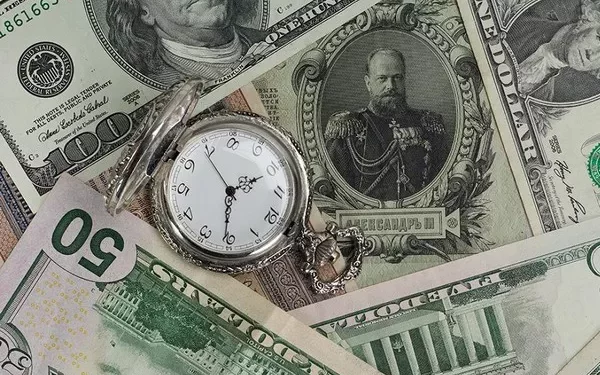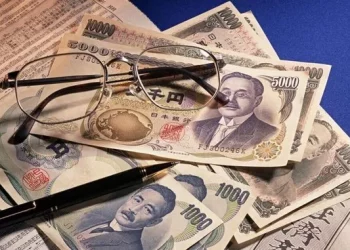Foreign exchange (Forex) trading is an essential component of global finance, offering opportunities for profit and risk management. Among the most traded currency pairs in the world are the US dollar (USD) and the Australian dollar (AUD). This article will take a deep dive into the conversion between USD and AUD, discussing the factors that influence exchange rates, how currency values fluctuate, and the methods to convert currency effectively. If you’re curious about how much $58 USD is in Australian dollars or looking to better understand the broader context of currency conversion, this guide will walk you through everything you need to know.
Introduction to Currency Conversion
At its core, currency conversion refers to the process of exchanging one country’s currency for another. In this case, we will focus on converting the US dollar (USD) to the Australian dollar (AUD). Currency conversion is essential for businesses, travelers, investors, and foreign exchange traders. The value of one currency relative to another can change frequently due to various economic and geopolitical factors.
For example, if you were planning to exchange $58 USD for AUD, the amount you would receive in Australian dollars depends on the current exchange rate between the two currencies. Exchange rates fluctuate constantly because of market conditions, economic data, and geopolitical events. Therefore, understanding the factors influencing currency exchange rates is crucial for anyone involved in the Forex market or those needing to convert currencies for travel or business.
How Exchange Rates Work
Before diving into the specifics of how much $58 USD is in Australian dollars, it is essential to understand the concept of exchange rates. An exchange rate is the price of one currency in terms of another. For instance, if the exchange rate between USD and AUD is 1 USD = 1.40 AUD, this means that for every US dollar, you would receive 1.40 Australian dollars.
Exchange rates are typically influenced by several factors, including:
Interest Rates: Central banks, such as the Federal Reserve in the United States or the Reserve Bank of Australia (RBA), set interest rates that impact the flow of capital between countries. When a country’s interest rates rise, it generally attracts foreign capital, which can drive up the value of its currency.
Economic Indicators: Data such as GDP growth, unemployment rates, inflation, and trade balances can affect the strength of a currency. Strong economic performance often leads to a stronger currency because investors seek to place their capital in stable and growing economies.
Geopolitical Events: Political stability, elections, and other global events can create uncertainty in the markets, leading to fluctuations in currency values. A sudden shift in government policy or a major international conflict can cause a currency to lose value or appreciate rapidly.
Market Sentiment and Speculation: Currency values are also affected by market sentiment and speculation. Traders, investors, and speculators constantly monitor global events and trends to anticipate currency movements. Their actions in the Forex market can drive the value of currencies up or down, often leading to short-term volatility.
Supply and Demand: The balance between the demand for a currency and its supply also plays a significant role in determining exchange rates. When demand for the US dollar is high, its value rises relative to other currencies. Conversely, when demand falls, the value of the dollar declines.
Factors Influencing the USD to AUD Exchange Rate
The exchange rate between the US dollar and the Australian dollar, like any other currency pair, fluctuates based on the dynamics mentioned above. However, several factors specifically influence the USD/AUD pair:
Commodity Prices: Australia is a major exporter of commodities such as iron ore, coal, gold, and agricultural products. The prices of these commodities have a direct impact on the value of the Australian dollar. When commodity prices are high, the Australian economy benefits, and the AUD tends to appreciate. Conversely, when commodity prices fall, the AUD may weaken.
Interest Rate Differentials: The Reserve Bank of Australia (RBA) and the US Federal Reserve set interest rates that impact the relative value of the AUD and USD. If the Federal Reserve raises interest rates while the RBA keeps rates unchanged, the USD may appreciate relative to the AUD, as investors seek higher returns in the US.
Global Risk Appetite: The USD is often seen as a “safe-haven” currency. During periods of global uncertainty or financial crises, investors may flock to the US dollar as a store of value. In such cases, the AUD may weaken as investors move capital into USD-denominated assets.
Trade Balance: Australia’s trade balance (exports minus imports) can also influence the value of the AUD. If Australia has a trade surplus, it indicates strong demand for Australian goods and services, which can lead to an appreciation of the Australian dollar.
The Current USD to AUD Exchange Rate
As of the latest market data, the exchange rate between the US dollar (USD) and the Australian dollar (AUD) fluctuates due to the dynamic nature of global markets. The exchange rate can change daily, and even hourly, based on various economic factors and geopolitical events.
For example, as of the time of writing, the exchange rate might be approximately 1 USD = 1.50 AUD. This would mean that if you exchange $58 USD, you would receive 58 * 1.50 = 87 AUD. However, this rate can vary depending on market conditions, the policies of central banks, and other influencing factors.
To obtain the most accurate and up-to-date exchange rate for USD to AUD, it is essential to check with financial institutions or currency exchange platforms. These platforms use real-time data to provide the most accurate conversion rates.
Practical Example: Converting $58 USD to AUD
Now, let’s calculate how much $58 USD is in Australian dollars, given the current exchange rate. Using an exchange rate of 1 USD = 1.50 AUD (for example), the conversion would look like this:
Amount in USD: $58
Exchange Rate: 1 USD = 1.50 AUD
Amount in AUD = 58 * 1.50 = 87 AUD
Therefore, $58 USD would be equivalent to 87 AUD at this exchange rate.
The Role of Fees and Charges in Currency Conversion
When exchanging currency, it is important to keep in mind that financial institutions such as banks, currency exchange services, and online platforms often charge fees or offer less favorable exchange rates. These fees can include:
Transaction Fees: Some institutions charge a flat fee or a percentage of the total amount being exchanged for the service.
Exchange Rate Margin: Many currency exchange services quote exchange rates that are slightly worse than the market rate. This margin is the institution’s way of earning a profit on the conversion.
ATM Fees: If you are withdrawing cash in foreign currency from an ATM, you may be charged additional fees by the bank or ATM provider.
It is important to compare exchange rates and fees before converting your currency to ensure that you are getting the best possible deal.
Currency Conversion for Travelers
If you are planning to travel to Australia and need to convert USD to AUD, you will likely go to a bank, currency exchange kiosk, or use an online currency exchange service. When converting smaller amounts for travel, it’s essential to factor in the fees charged by the provider.
To ensure you are getting the best value, it may be helpful to exchange currency in advance rather than waiting until you arrive at your destination, where exchange rates may be less favorable.
Additionally, it is wise to carry a mix of currency, including some cash and a travel card, to avoid relying entirely on one method of payment while abroad.
Currency Conversion for Investors and Traders
For investors and Forex traders, the process of converting USD to AUD is more complex, as exchange rates fluctuate regularly. Active traders monitor the market, using technical analysis and economic indicators to predict currency movements and execute trades.
Currency traders can take advantage of exchange rate fluctuations by buying low and selling high or vice versa, depending on market conditions. For long-term investors, holding assets denominated in foreign currencies, such as AUD, can be part of a diversified investment strategy to manage currency risk and capture potential returns.
Conclusion
In conclusion, the conversion of $58 USD to Australian dollars depends on the prevailing exchange rate between the two currencies. Exchange rates fluctuate due to a variety of factors, including economic indicators, interest rates, and geopolitical events. As of the latest market conditions, $58 USD could be worth around 87 AUD, based on an exchange rate of 1 USD = 1.50 AUD. However, this rate can vary, and it is important to check real-time rates for the most accurate conversion.
For those looking to convert currency, it is essential to consider transaction fees and exchange rate margins, as these can impact the total amount received. Whether you are traveling, investing, or engaging in Forex trading, understanding currency conversion and the factors that influence exchange rates can help you make informed decisions in the global financial market.
Related Topics:



























